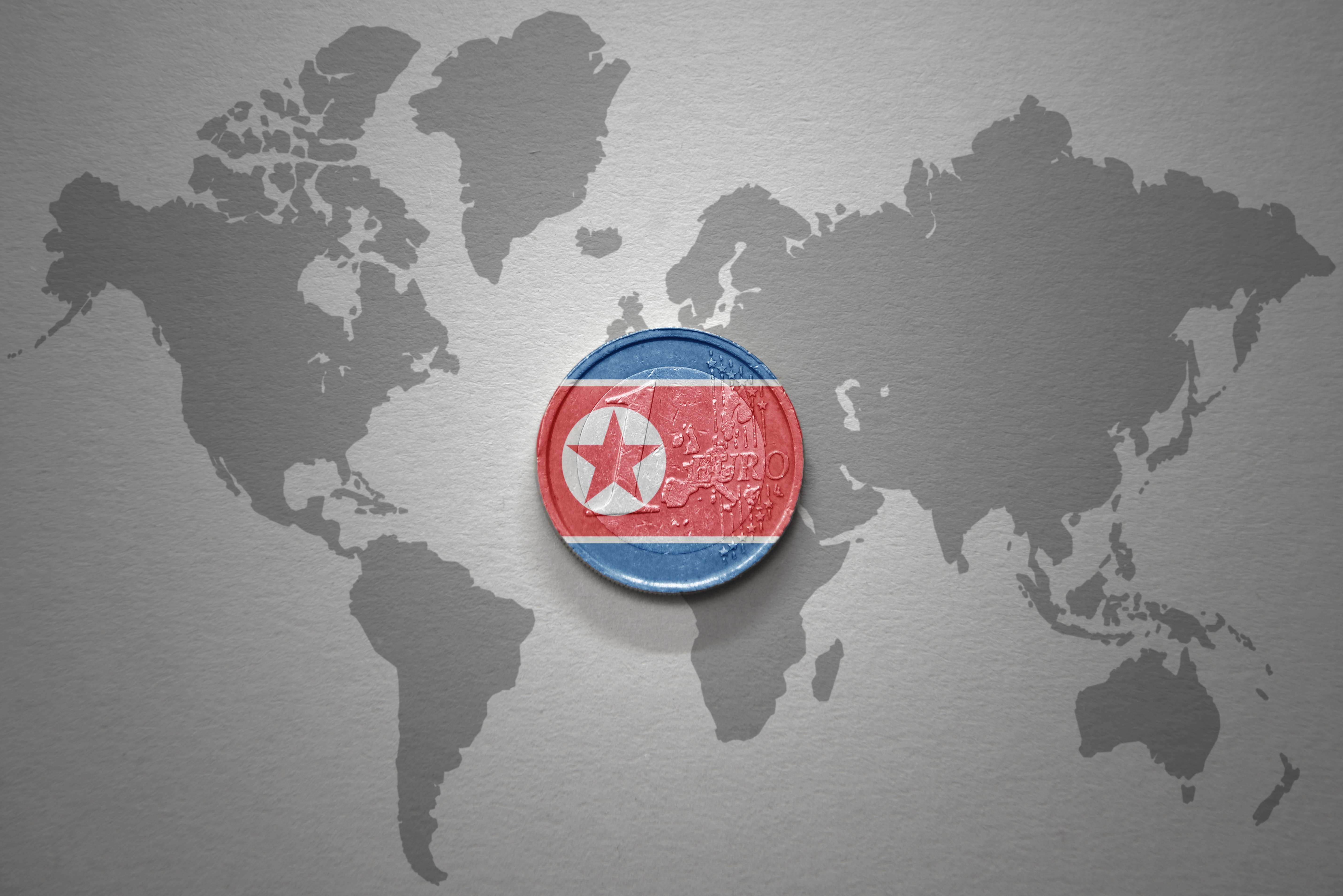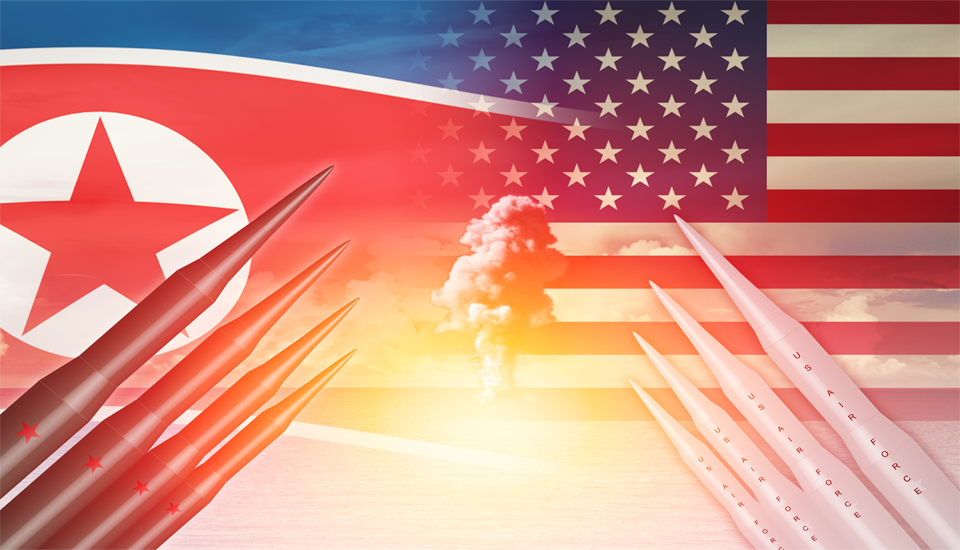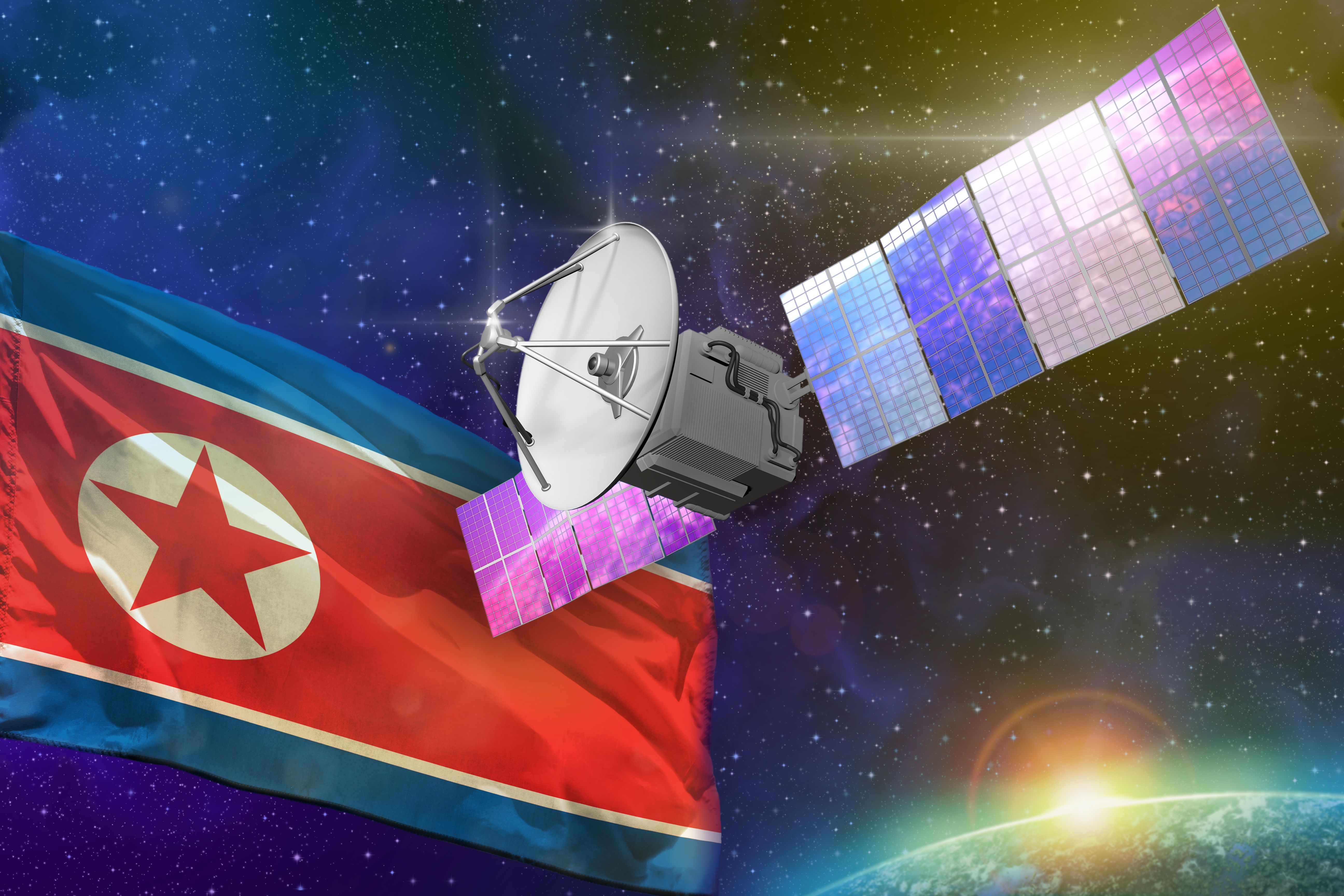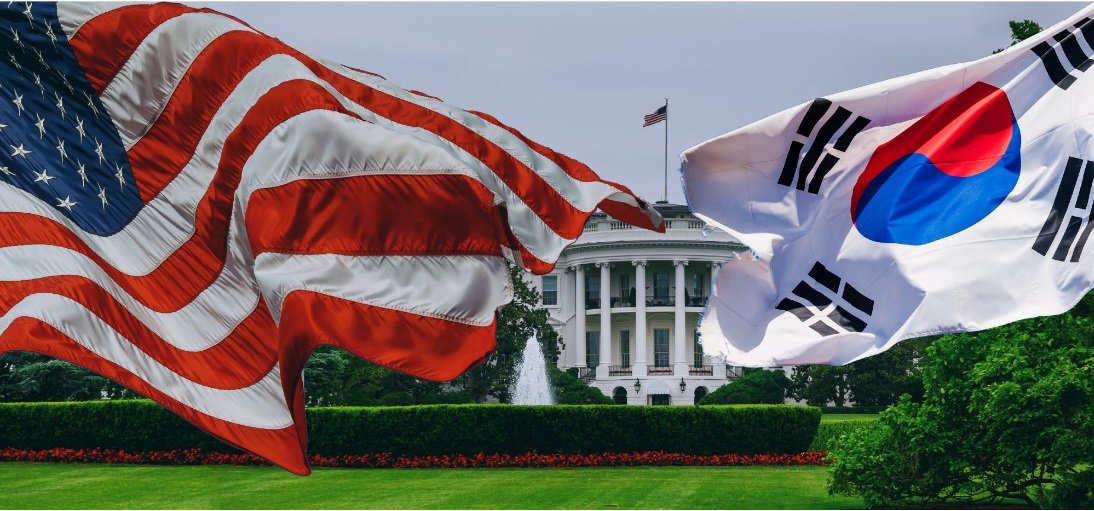
Comparing US-EU Perspectives on Inter-Korean Relations, North Korea, and Unification
Research Reviews | June 23, 2023
Nicola Casarini
Associate Fellow, Istituto Affari Internazionali
Nicola Casarini, an associate fellow at the Istituto Affari Internazionali, compares the different North Korea policies implemented by the US and the European Union (EU). Casarini points out that while the US pursues its DPRK strategy within the context of US-China competition, the EU prioritizes cooperation and dialogue with the DPRK to advance their respective economic interests. Emphasizing that North Korea remains open to engaging in dialogue with European states like Sweden, Finland, and Germany, Casarini urges US-ROK policy researchers to kick off trilateral cooperation through a Track Two strategic dialogue.
Key Findings
This study argues that a better understanding of the different strategies developed by the United States (US) and the European Union (EU) towards North Korea and inter-Korean relations will offer novel insights to the Republic of Korea (ROK) and Western policymakers about the US and EU’s different capabilities and objectives on the Korean Peninsula, making it easier to figure out what would be the best combination of US-EU-ROK involvement towards North Korea to obtain the desired result (be it engagement or containment).
Over the years, the EU has proved to be: (1) an independent variable for peace support on the Korean Peninsula, only marginally influenced by Washington when it comes to supporting trust building between the South and the North; (2) an asset for ROK policymakers – be they progressive or conservative – committed to dialogue and reconciliation with the North, since they can find in the EU a counterbalance to US’ hardening position vis-à-vis North Korea and inter-Korean relations.
On the question of unification, this study maintains that the EU and the US are not on the same page: while Washington tends to see Korean unification as a potential challenge to US military presence on the Peninsula, the EU views the prospect of unification in terms of an opportunity for promoting Eurasian connectivity, as well as Europe’s economic interests in Northeast Asia.
US Grand Strategy Toward Northeast Asia and the Korean Peninsula
US grand strategy towards Northeast Asia has traditionally focused on two elements. The first core element is hard power and the system of alliances, which has required Washington to maintain sufficient military capabilities to deter – and eventually defeat – any state that attempts to dominate the region. The second core element is the promotion of a liberal international order, which has taken the form of protecting networks of global trade and finance, as well as participating in rule-based international institutions. The US grand strategy of combining military and economic power has allowed important allies such as South Korea to prosper and become a technological powerhouse in a regional environment that – even if fraught with challenges – has been made stable by the US-ROK Mutual Defense Treaty.
Since Beijing has become America’s main challenger in Asia, Washington’s approach to North Korea and inter-Korean relations have become interlinked with – and for some scholars even dependent on – US strategy towards China. Both Trump and Biden’s National Security Strategy share the view that the great power competition is a defining feature of the world order today.
Europe’s Grand Strategy Toward Northeast Asia and the Korean Peninsula
Unlike that of the US, the first core element of the EU’s grand strategy towards Northeast Asia and the Korean Peninsula is the promotion of Europe’s economic interests in the region. For instance, Kim Dae-jung’s Sunshine Policy was studied carefully by a select group of EU policymakers in Brussels and other European capitals, since Seoul’s changing attitude towards the North could have significant implications for the promotion of Europe’s interests in a region crucial for Europe’s growth prospects.
The second core element of the EU’s grand strategy is support for diplomacy and multilateral security initiatives. This includes implicit support for the US system of alliances, given Europe’s inability to deploy military assets in the region – but also the backing of multilateral initiatives developed outside Washington’s reach, such as the process of Trilateral Cooperation among South Korea-China-Japan.
The third core element, added in the last few years, is security cooperation with like-minded countries. Although Europe’s Indo-Pacific strategy aims to encompass all policy domains, trade and investments remain the focal points of the EU external action and intervention in the region. According to the 2021 strategy document, the EU aims to sign and update free trade and investment agreements with Indo-Pacific countries, and to promote development aid and European investments in a region populated by lively economies.
The main priority for the EU and most of its member states regarding North Korea is to minimize the negative impact that its nuclear and missile programs have on the non-proliferation regime – a position that highlights Europe’s commitment to a rules-based international order.
Comparing EU-US strategies
Despite some overlaps, significant differences between the European and American grand strategies towards Northeast Asia and the Korean Peninsula have emerged. First, the EU’s grand strategy in East Asia focuses on cooperation, not competition, while the US grand strategy in the region is increasingly framed in terms of its competition with China. The EU’s grand strategy envisions a more inclusive and cooperative Indo-Pacific than the American one, and this implies that the EU may not blindly follow the US’ framing of the region as two competing and opposing camps: China-Russia-North Korea versus US-Japan-South Korea.
The second substantial difference has to do with Europe’s persistent support for diplomatic initiatives aimed at inter-Korean relations, including an unwavering backing for all versions of South Korea’s engagement policy with the North since the late 1990s – an approach that the EU has defended and acted upon even when aspects of it cut against the grain of US strategic interests in the region.
The third difference, which is possibly the most consequential one, is related to Europe’s support for initiatives aimed at regional cooperation and integration in Northeast Asia – an approach which contrasts with Washington’s preference for bilateral relations and reliance on the US system of alliances.
US strategy towards the Korean Peninsula largely depends on Washington’s own North Korea policy as well as strategic considerations regarding China and regional order, while the EU’s strategy has been characterized by a focus on cooperation and an unwavering support for North-South dialogue and regional integration initiatives.
Areas of Potential Transatlantic Cooperation on North Korea
1. Sanctions
The priority for the EU in dealing with North Korea is to minimize any negative impacts that a diplomatic deal with North Korea might have on the international non-proliferation regime, while also being worried about the risk of nuclear and missile proliferation that could result from North Korea selling that kind of material or technology to other states or terrorist groups. Accordingly, the EU’s main objective in this whole process is for North Korea to re-join the Non-Proliferation Treaty (NPT) as a non-nuclear weapons state. Europe remains skeptical about North Korea’s progress in this direction—this is why the EU has largely maintained pressure on North Korea despite the advances in the inter-Korean talks during the Moon Jae-in administration.
Nevertheless, the EU has been consistently more moderate than Washington, as illustrated by the use of humanitarian exceptions to alleviate the effects of the exceptionally stringent United Nations (UN) sanctions. Moreover, while the US has designated numerous foreign entities facilitating illicit North Korean activity with particular prevalence in China and Russia, Europe’s sanctions against Chinese and/or Russian entities have been quite limited.
2. Human Rights
Human rights is also an area where there has been a high-level of transatlantic unity. The US has long expressed its concern for the human rights situation in North Korea, including the issues of political prison camps, repression of freedom of speech, and the mistreatment of North Korean refugees. Europe has often joined the US in denouncing human rights violations inside the Democratic People’s Republic of Korea (DPRK). During the early years of the Obama administration, some EU member states – namely France and Ireland – took leadership of the international pressure movement against the North Korean human rights situation, attracting an unprecedented amount of international attention to the human rights situation in the country (Ko 2006).
3. Humanitarian Aid
While Washington has not provided any significant amount of humanitarian assistance to North Korea since 2009, humanitarian aid is an important element of EU-North Korea relations. Following a similar approach to the Sunshine Policy, the EU decided to keep humanitarian assistance separated from security concerns – mainly the North Korea nuclear program. The EU's approach to the DPRK has progressively shifted towards a strategy characterized by heightened emphasis on exerting pressure, accompanied by a decline in the magnitude of aid provisions. Notwithstanding this trend, the European Union has consistently emerged as one of the notable benefactors persistently extending humanitarian assistance to Pyongyang.
4. Economic Engagement
Since the North attacked the South in 1950, the US has imposed a near total economic embargo on Pyongyang. US economic interaction with North Korea remains minimal, almost negligible. In contrast, during the period of active engagement and until 2016, trade became a key element through which the EU pursued positive relations with North Korea.
However, in 2006, following the DPRK’s launch of a series of ballistic missiles and the testing of its first nuclear weapon, the EU followed the UN Security Council and adopted ‘restrictive measures’ against the DPRK. All European trade activities with the DPRK were regulated in order to prevent direct or indirect supply or sale of equipment that could lead to the DPRK developing weapons systems, as well as the supply or sale of luxury goods as punitive measures to bend the will of the North Korean elite. Nevertheless, at the end of 2019 the EU would still be the DPRK’s 11th largest trading partner.
5. Diplomacy
For the US, the question of normalization of relations with the DPRK remains central. The US has also pushed forward multilateral negotiations to deal with North Korea’s nuclear and missile threats, for instance, by creating the Six-Party Talks following the second nuclear crisis. North Korea demanded bilateral talks with the US, but Washington was reluctant to deal directly with Pyongyang. However, EU was not invited to the Talks. The perception of US policymakers at the time was that the EU had a very limited role in East Asia’s security dynamics.
Meanwhile, Europe has traditionally emphasized the role of multilateral negotiations and was disappointed by the collapse of the Six-Party Talks. Although the EU was not part of them, Brussels and some EU member states have consistently shown availability to broker the resumptions of the Talks. Under these close relations, the two parties would prepare the conditions to resume multilateral negotiations on denuclearization on the Korean Peninsula.
All the participants in the Six-Party Talks recognize that the EU could play a role in revitalizing the Talks, since Brussels could bring to the negotiating table its recent experience dealing with Iran’s nuclear dossier. [1] The EU was actively involved in the multilateral negotiations on the Iranian nuclear program that led to the Joint Comprehensive Plan of Action (JCPOA, known commonly as the Iran Nuclear Deal), signed in Vienna by the UN Security Council P5 plus Germany and the European Union with the Iranian regime on July 14, 2015. The P5+1 format has many similarities to the Six-Party Talks. The Iran nuclear deal of 2015 stands as an example of the EU’s ability to find a compromise among various actors with different interests, objectives, and agendas – something that could be of use if the EU were given a role in negotiations over North Korea’s nuclear dossier.
EU’s Potential Diplomatic Role in Addressing DPRK Crisis
If the EU’s initiative concerning the establishment of an ad hoc instrument similar to the EU-Iran trade mechanism Instrument in Support of Trade Exchanges (INSTEX) succeeds, a new window of opportunity could be created to address the issue of Pyongyang’s nuclear arsenal through diplomatic means. Should the international community have to adapt to a nuclear DPRK, the EU is ideally positioned to spearhead efforts to create a multilateral security organization in North-East Asia – something akin to the Organization for Security and Cooperation in Europe (OSCE) – which could serve as a primary instrument for early warning, conflict prevention, and crisis management.
Moreover, the EU could be important in granting long-term legitimacy to an eventual US-DPRK deal. Given that the North Korean regime is frightened by the fact that any agreement or decision can be reversed by a change in the US leadership, counting on the EU as a guarantor would be relevant for Pyongyang. Europe could also play a role in revamping economic cooperation with Pyongyang, above all in terms of infrastructure development in North Korea. Some European countries indicated in the past their willingness to support – and even to participate in – joint economic projects, similar to the Kaesong Industrial Complex.
Future changes in the EU’s strategy towards North Korea are likely to be triggered by individual countries acting in close consultation with the EU level (Ko 2008). In the past, various member states, including Italy and Sweden, established diplomatic relations with Pyongyang before the EU did; Finland and the Netherlands started making financial contributions to the Korean Peninsula Energy Development Organization (KEDO) before the EU decided to do so; France and Ireland played a proactive role in encouraging the EU to increase its pressure on the DPRK in response to its human rights situation. The tendency inside EU policy circles is to have one or more member states to spearhead a certain initiative towards North Korea and then, if successful, make it part of the EU’s official policy towards the DPRK.
North Korea continues to welcome an increased role of Europe in the region, as it hopes that the European stance might influence that of the United States and convince Washington of the benefits of a direct engagement with Pyongyang (Pacheco Pardo 2017).
Conclusion
An understanding of the different strategies developed by the US and the EU towards North Korea and inter-Korean relations offers novel insights to ROK policymakers about the two actors’ different strengths and capabilities concerning the Korean Peninsula. This makes it easier to figure out the best mix of US-EU-ROK involvement towards North Korea to obtain the desired result, be it engagement or containment. For instance, US and EU capabilities could be jointly marshaled to adopt harsher sanctions and be more vocal in denouncing human rights violations. Conversely, the EU has proved time and again to be an actor that has consistently supported ROK’s engagement policy with the North, notwithstanding the government in place in Seoul – a dynamic that could be used by policymakers (be they progressive or conservative) committed to North-South reconciliation and unification. The EU has, in fact, defied Washington a few times, and continues to try to influence US policy towards the Korean Peninsula in the direction of pursuing dialogue with the North.
With regards to the question of the denuclearization of the Korean Peninsula and the diplomatic efforts aimed at bringing Pyongyang back to the negotiating table, a combination of US firm military posture with the position of the EU which continues to keep the door open to dialogue with the North could eventually yield some results. While the US and the EU agree on the denuclearization of the Korean Peninsula as the ultimate goal, Brussels has acquired experience in negotiating the Iran Nuclear Deal and in convening the group of P5+1 countries – a format which has many similarities with the Six-Party Talks. This offers ROK policymakers the possibility to have an additional actor – which is not officially involved in the Six-Party Talks – to broker negotiations between North Korea and the other concerned parties.
Policy Suggestions
1. Consider establishing an official trilateral US-ROK-EU forum for discussion that would exchange views on how the West and the ROK can join forces to support North-South reconciliation and unification.
2. Consider creating a Track Two trilateral US-ROK-EU dialogue mechanism among think tanks working on North Korea and Korean security.
3. Consider supporting European initiatives aimed at dialogue with North Korea by funding (without publicizing it) delegations from the DPRK to travel to those countries that are open to entertaining talks with Pyongyang. In Europe, these countries include: Sweden, Finland, and Germany. Moreover, the new Italian government has also shown availability to host talks with the North, and the Vatican could also play a role in facilitating dialogue with the DPRK.
The above suggestions, in particular the second one – Track Two trilateral US-ROK-EU dialogue mechanism among think tanks - is the easiest to implement. It is based on the consideration that there are not enough opportunities for dialogue between EU and ROK experts and policymakers with regard to the inter-related questions of North Korea and inter-Korean relations – and this notwithstanding the many similarities that both Seoul and Brussels have displayed over the years when it comes to engaging Pyongyang. If this Track Two exercise yields some fruitful results, then a more official trilateral US-ROK-EU forum for discussion (policy suggestion n. 1) could be proposed to the relevant authorities.
The EU has fostered a very intimate relationship with South Korea, which is the only country in the world with the three agreements covering economics, politics, and security in effect. There is an annual EU-Korea High-Level Political Dialogue which allows the two sides to discuss issues of common concern, including North Korea. However, these discussions are quite general and do not go to the heart of the issues pertaining to inter-Korean relations and unification.
Reference
Goodby, James. 2005. "The Six-Party Talks: Opportunity or Obstacle?” Building a Northeast Asian Community, 1: 133-146.
Ko, Sangtu. 2006. "EU Humanitarian Diplomacy Toward North Korea: Comparison wih the U.S. Approach.” Korea Observer, 37, 6.
_________. 2008. "Vanguard of European Politics: The Role of Member States in the EU's Foreign Policy Toward North Korea.” Journal of International and Area Studies, 15, 1: 47-59.
Pacheco Pardo, Ramon. 2017. "The EU and the Korean Peninsula: Diplomatic Support, Economic Aid and Security Cooperation.” Istituto Affari Internazionali.
[1] This is the author’s personal assessment after years of interactions with representatives of the countries involved in the Six Party Talks.
■ Nicola Casarini is an associate fellow at the Istituto Affari Internazionali (IAI).
■ Typeset by Jisoo Park, Research Associate; Yu Na Choi, Intern
For inquiries: 02 2277 1683 (ext. 208) | jspark@eai.or.kr

Tasks for North Korea Policy After the Washington Declaration
Yu-hwan Koh | June 05, 2023

North Korea’s Space Development: The Gap Between Ideal and Reality
Cheol-wun Jang | May 22, 2023

The South Korea-U.S. Summit and Measures to Enhance Bilateral Cooperation on North Korea
Jechun Kim | May 03, 2023
LIST